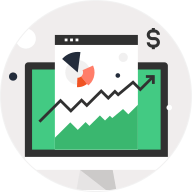TV advertising is still the big gorilla in advertising despite all the success gained from digital and online campaigns. Reach, impact and recall still rank highly compared to other alternatives, especially radio and print and most importantly, it still drives leads and sales. However, it can get expensive, especially for local and regional businesses. For certain markets, we are able to apply TV advertising using a Cost Per Call (CPC) or Cost Per Lead (CPL) approach. Fees are paid only when a call or lead is generated, which helps control cost and minimizes waste. Usually, we go through a test run of the campaign to see if it will perform and if so, we then proceed towards suggesting a cost per call price and if necessary, a cost per lead as well. The difference between the 2 options is that a cost per call is routing a warm transfer from a current caller over to the business, while the cost per lead requires our answering service to vet each caller out first to determine if they qualify. If the caller meets the requirements, they are then transferred over or if the call is during off-hours, messages are left for immediate follow-up.
Typically, for these types of campaigns, we request each business to have not just enough internal staffing to handle the call leads, but also enough open phone lines available as well. If that is not possible, we do request using an answering service which we can provide as well that can support English and Spanish callers. The reason for this should be obvious since these leads should be handled right away to generate a sale or least progress it further down the sales funnel to a close. Otherwise, these leads being routed to a voicemail is usually a turn-off since most callers like the immediacy and will then seek out competitors that are more available. Since a CPL requires more labor and factors to be met than a CPC, CPLs are more expensive than a CPC naturally. In some cases, brands may prefer to receive any calls over 30 seconds so that they can vet themselves. However, more often, businesses prefer efficiency and want to handle a caller that has been pre-qualified first to maximize their time, despite the higher cost. Before launching any campaign, we’ll recommend which approach fits better with the goals and audience.
Of course, a video spot is needed for these CPC and CPL campaigns, which can re-purpose an existing TV ad or use video ad templates which can blend stock content with original footage and effects or we can have a video production team shoot and then edit to final, the ad spot to be used. In some cases, brands may want to test multiple ad versions to determine which messaging has more impact. Using TV ads on a CPC or CPL basis to generate leads and sales, can apply to certain industries such as legal for mass tort cases and education to boost online enrollments to medical for certain procedures and rehab centers to fill more beds.
Additionally, it is not uncommon to pair a CPC or CPL effort with a PR or radio campaign or digital efforts such as Pay Per Click (PPC) or posting the same video ads online on YouTube since it has become the #2 search engine in the US behind Google, getting more traffic than Bing & Yahoo. An interesting tactic that we can apply is using programmatic campaigns like Video Pre-Roll which shows online video ads – before the main video requested runs. We can also do this mid-roll or post-roll as well, but typically pre-roll is recommended since it will have higher views than the other 2 options. Regardless, these video pre-roll ads can be configured to only appear when their TV advertising is running as a more intelligent way to surround a target audience both online and offline on TV, in a coordinated fashion. Obviously, employing lead tracking is a must, especially if multiple marketing campaigns are running, since we need properly assess which markets, audience and messaging if we are A/B testing tends to generate more sales and leads. By applying analytics, we can more subjectively optimize the campaign and improve them faster, which then boost results and ROI, since it lets us and our clients know where their money could be best spent.







